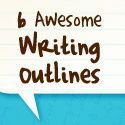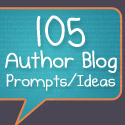I have a question for you: What’s your book about?
No, no, I don’t want the long explanation. If you started with “Well, um, you see…there’s this girl…” I immediately stopped listening and started thinking about what I’m going to have for dinner tonight. I want you to give me the thirty second elevator pitch that’s going to pique my interest and make me want to read your novel instead of the pile of unread books I have at home on my nightstand.
 Okay, follow-up question time: What’s the TP of your novel?
Okay, follow-up question time: What’s the TP of your novel?
Did you seriously just say something about toilet paper? No, TP in this instance stands for Turning Point. In other words, the catalyst that makes your characters resolve their conflict. Wait — do we need to back-up here? Are you clear on what the underlying conflict of your story line is?
Alright, final question: What happens at the end?
I know you’re giving away all your secrets, but you can share with me. I won’t tell a soul. Just share the last line with me. Maybe the last paragraph. The last scene? You do know what the last scene in your novel will be, right?
Right?
If you stumbled through your answers to the questions above, I’d like to introduce you to our newest set of helpful Duolit tools. We have put together six plot and character outlining forms that not only look extremely spiffy, but they might actually help you get focused on your novel.
Still unsure why you should take the time to fill these out? Let me give you three quick reasons:
1. Writer’s Block: Despite the best efforts of the world’s leading doctors, a cure-all for Writer’s Block has yet to be found. However, there are some preventative measures we can take to keep the beast at bay, like writing outlines.
2. Motivation: A daily once-over of your plot or character outlines will keep you focused on your end goal. It will also remind you that you can (and will) complete your project if you put your mind to it.
3. Marketing: If you start promoting your book prior to its completion (and you should) having an outline with specific details about your characters and plot will help you focus your marketing efforts.
So now that you know how badly you need to do this, let me share a few details about the six helpful (and did we mention beautifully designed) plot and character outlines that we’re giving away today.
(Preface: You can choose one outline that best fits your style or a combination of outlines, but you don’t really need to do all six of them unless you just really, really, REALLY like outlining things…and there’s nothing wrong with that.)
[ PLOTS ]
The Basic Plot Outline
IF you prefer to leave plenty of space in your plot for changes on the fly….this one’s for you.
The basic plot outline can be tackled in under thirty minutes while you’re also watching TV and waiting for the clothes to dry. Just write down your title, names of your characters and maybe a line about each, and an overall summary of the plot you have in mind. Simple, quick and easy. Like my favorite foods.
« Download Basic Outline [PDF] »
The Detailed Plot Outline
IF you own more than six colors of post-it notes….this one’s for you.
From the highest roman numerals to the lowest alphanumeric characters you can outline every last inch of your novel scene by scene, page by page, line by line. Our plot templates include a starter kit for your outline but we know you’ll want to go into much greater detail than one page can hold, so feel free to expand. Also, I own more than six colors of post-it notes…and a set that features a different notepad for each month…with corresponding post-it flags. Don’t judge.
« Download Detailed Plot Outline [PDF] »
The Freytag Model
IF you prefer more of a scientific approach to outlines…this one’s for you.
In between the highly detailed and the very basic, the Freytag model begins with the exposition (introduction of characters, establishing the scene), rising action (building scenes), climax (turning point), falling action (aftermath of the climax) and the resolution (tying up of loose ends). It covers all the important bases without excess.
« Download Freytag Model [PDF] »
[ CHARACTERS ]
Basic Character Profile
IF you like to let your characters reveal themselves to you on their terms…this one’s for you.
Start with a choice between protagonist, antagonist, stock character, supporting character or the delightfully ambiguous “other” and you’re on your way. Throw in a name, a few goals, some information on what motivates the character to act the way he/she does, and wrap up with any other information might be relevant. You can fill it out in a hurry and be on your way to writing your novel in no time!
« Download Basic Character Profile [PDF] »
In-Depth Character Profile
IF you want to know your characters better than you know some of your family members…this one’s for you.
Leave no detail unplanned with this outline that can seem more like an intense dating profile than a character sketch. From height, hair color and facial features to favorite foods, hobbies and music, you’ll come away from this profile with a three dimensional character so realistic you might start to feel a teensy bit schizophrenic. It’s okay, we’ve all been there.
« Download In-Depth Character Profile [PDF] »
[ PERSPECTIVE ]
Choose-Your-Perspective Profile
IF you sometimes get your perspectives mixed up…this one’s for you.
Outlines don’t have to be limited to plots and characters. One of the biggest trip-ups for authors can be that pesky little thing called perspective. First perspective, third perspective or a mix of the two can make things difficult, which is why we created this choose-your-own adventure style outline for sorting your perspectives and tenses. Jump in and knock this profile out really fast so you’ll have established guidelines before you tackle your novel.
« Download Choose-Your-Own Perspective Outline [PDF] »
Alright, what are you waiting for?
We just gave you six (count’em SIX) free (totally FREE) tools for planning your novel. If you’re not excited, if you’re not ready to get to stepping and fill these suckers out, then something’s wrong with you! Even if you’ve already started writing, you can still dive in and fill out a few of these worksheets to stay on track with your writing down the line.
What are your feelings about outlines? Do you love them? Are you a rainbow post-it person like me? Are there other tools you’d like us to create? Shout out in the comments, shoot us an email, tweet at us or find us on Facebook.
You can also send out a smoke signal, but it’s been a little windy here lately so I can’t promise things will translate well in that medium…

 We're
We're 








